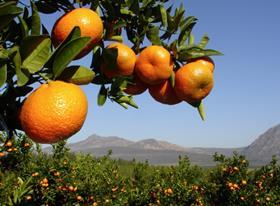
The Lowveld area of north-eastern South Africa has been hit by hail as one of the most violent storms in recent history caused widespread damage in the region, as well as in KwaZulu-Natal.
The area affected by hail lies mainly around Nelspruit, with growers at Malalane further down the Crocodile River not being affected. In KwaZulu-Natal, unprecendented rain in one single day caused flooding and damage in and around the city and in the port of Durban.
For citrus growers in this area of the Lowveld, producing mainly navels, Valencias and mandarins, the hail is a tremendous setback as the crop for next year is now setting on the trees.
In the Port of Durban, there was some luck for the citrus industry since shipments for the season are just about completed. “If this happened in the peak of our season, it could have been a disaster,” said the CGA’s Mitchell Brooke.
The CGA’s grower representative in the Lowveld region, Andrew Millar, said that assessments as to the scale of the hail damage were still underway. “It could cut next year’s citrus exports from this region by around 1.8m cartons,” he said. “Some orchards suffered 80-90 per cent damage.”
The area affected also produces macadamias, but the sub-tropical fruit in the area was apparently unaffected. Since hail often occurs in patches, Miller suggested caution when making early predictions.
In the Cape region, where there has simply not been enough rain over the past winter to see growers of deciduous fruit, table grapes and citrus through the next season, the City of Cape Town has started rationing to its citizens in order to save water.
“Where our dams should have been at least at 70 per cent capacity to comfortably get through to the next winter, we are now sitting at 37 per cent,” said a city spokesperson. Last year dams were 57 per cent full after the season.
Rationing takes places on an ad hoc basis without warning. The City is taking extraordinary measures to develop additional water resources, including underground reserves at deep levels, as well as desalination of sea water.
Growers in the Hex River Valley said that they would have about 70 per cent of their normal water quotas available and will have to work carefully to get through the season.
Meanwhile, in the central and northern regions of the country, good rains have arrived early this year. The two main storage dams in the Vaal and Orange Rivers are in excess of 90 per cent full. If this continues, the flow in these rivers will continue dramatically and the table grape and fruit growers lower down in the Northern Cape and Namibia may well encounter full rivers later this summer.



